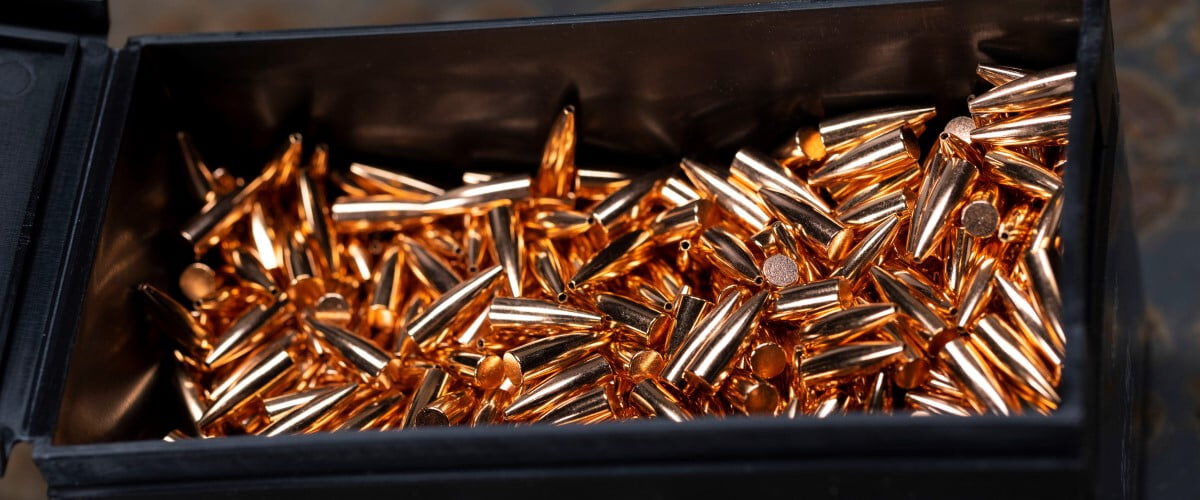
The famed outdoor writer John Wootters once said that the last three animals living on earth will likely be a cockroach, a coyote and a whitetail deer. The comment was meant to be humorous, but there’s certainly some truth in his words: The adaptable coyote is one species that is here to stay.
Over the past century as other species were being decimated, coyotes managed to expand their range to include most of North America. This cunning canine does well on city streets and deep, remote wilderness areas, and that’s why coyotes are a favorite target of hunters.
Coyote Cartridges
I won’t spend a lot of time on the specifics of choosing a coyote cartridge because there are so many great options. Coyotes weigh on average around 30 pounds, so you don’t need a powerful magnum or even a deer-class cartridge like the 6.5 Creedmoor or 270 Win. Smaller rimfires like the 17 HMR are really too light for anything but dispatching ‘yotes on a trapline. But just about any round between those two extremes is ideal for songdogs.
I’ve always been a fan of the centerfire .22s for hunting coyotes, and nothing I have ever seen has convinced me to change from that. The 222 Rem., 22-250 Rem., 220 Swift, 224 Valkyrie and others are all exceptionally effective. The 223 Rem. is probably the most versatile of the bunch since there are so many rifles and loads available. I live in southern Ohio where shots are typically short (under 300 yards). The 223 is well-suited for hunting at those distances and still carries plenty of power to belt a big dog that’s call shy. However, if I lived in the wide-open plains of the American West, where there’s a potential for long shots and perpetual wind, I’d likely stick with 224 Valkyrie since it was designed to shoot heavy-for-caliber high BC bullets that buck wind effectively.
Bullet Construction
Let’s say you’ve settled on one of the versatile centerfire .22s as your coyote rifle. You won’t be disappointed. But which bullet should you use to quickly drop a ‘yote?
As with caliber selection, that question can be as complex or simple as you’d like to make it. For years the prevailing notion has been that aerodynamic bullets with thin jackets that expand rapidly are ideal for shooting song dogs, and I don’t disagree. When a 55-grain bullet with a thin copper jacket traveling at around 3,000 feet per second strikes a coyote, the results are dramatic. Energy transfer is massive and sudden, and the dog is usually dead before it hits the ground.

That’s why bullets like Speer’s TNT and Varmint Hollow Point are so popular. The TNT features a thin jacket with internal fluting that causes rapid expansion and a sudden and complete transfer of energy to the target. Varmint Hollow Point bullets work in much the same way: the streamlined profile and relatively high ballistic coefficient make it easy to hit your target, but the hollow nose cavity initiates violent expansion even at relatively low velocities.
Some states don’t allow the use of lead core hunting bullets, but that doesn’t mean varmint hunters don’t have viable options in those areas. Speer’s TNT Green is one of my favorite all-around varmint bullets because it consists of a thin copper jacket surrounding a compressed powder core. The effect is similar to what you’ll see from a lead bullet with a very thin jacket (like the standard TNT) or a hollow point projectile, but since TNT Green bullets don’t contain lead they’re legal in most jurisdictions.
Preserving Pelts
Rapid expansion is good for dropping dogs in their tracks, but are they the best option if you want to preserve pelts? That’s an old question and most experienced coyote hunters will provide you with a different answer. One camp believes that the TNT, TNT Green, Varmint Hollow Point and other rapid expansion bullets are best for preserving pelts because the bullet fragments and expands once its inside the body cavity, leaving the pelt largely untouched despite massive trauma inside the body cavity. And that’s exactly how these bullets perform—sometimes. I’ve seen hollow point/thin jacket bullets strike objects and begin expansion prior to entering the target. I’ve also seen them produce very large exit wounds.
So, does it make more sense you use a full metal jacket bullet when hunting coyotes? Probably not. FMJ bullets don’t expand, and unless they hit bone they don’t always transfer their energy effectively and efficiently. If these bullets do hit bone, well, the off-side pelt damage can be far worse than what you’ll get with an expanding bullet as bits of bone are driven through the hide. Even though FMJ bullets seem to make sense you’re probably better equipped with one of the TNT or Varmint Hollow Point bullets.
One interesting compromise is Speer’s Varmint Soft Point bullet. Few people consider a controlled expansion bullet like this one for varmints, but the concept makes sense. With the VSP bullet you’re getting similar expansion and energy transfer as you would with a TNT-style bullet, but the expansion isn’t as dramatic and so the odds of creating a massive wound channel on the far side of the target animal are slim.
Whichever bullet you choose remember that accuracy is of top importance. Quality bullets with high ballistic coefficients are important because before you ever worry about the condition of the coyote’s pelt, you need to be certain that you hit your target.